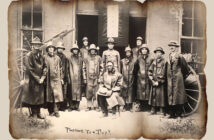Some might know about the association of Benjamin Franklin with Daylight Saving Time. In 1784, his satirical essay for The Journal of Paris, “An Economical Project for Diminishing the Cost of Light,” Ben lightheartedly proposed that the French would be able to conserve their candles by waking up earlier in the morning and making use of the natural light.
Ben wasn’t the only brain behind DST; it was a conglomeration of several ideas throughout the world. Ancient civilizations, such as Rome, adjusted their daily routines to the Sun’s schedule, once they noticed that the light would change throughout the course of a year. William Willet, a British man, proposed his version of DST in 1905, publishing his brochure, “The Waste of Daylight.” His suggestion was to move clocks ahead 20 minutes on each of the four Sundays in April, and switch the clocks back 20 minutes on each of the four Sundays in September. This adds up to a total of eight clock changes in a year. That’s a lot of time spent messing with your clocks!
Robert Pearce was interested in Willet’s proposal, and pitched the idea to the House of Commons in 1908. The bill was drafted in 1909, presented to Parliament several times, but the bill didn’t become a law until 1916 in World War I Germany.
The benefit of DST (also known then as, “War Time”) during WWI was thought to minimize the use of artificial lighting in order to save fuel and other valuable wartime resources. Other countries around the world – including the United States – quickly adopted the time change. President Woodrow Wilson signed it into law in 1918 to support the war effort, hoping to preserve resources. Franklin D. Roosevelt established year-round DST in 1942.
After your Halloween revelry this year, remember to “fall back” on November 1, the last day of Daylight Saving Time.
Photography by Mike Naddeo








